***NOTE***I got this idea from the Herald Dispatch's Dog Blog. Some of this information was posted by me as I felt this was a good subject to expand on. Thank you.
Cross Breed Dogs on Purpose:
What is a Labradoodle? In 1989 Wally Conron of Kew, Australia, began crossing the Labrador Retriever and the Standard Poodle, trying to create a guide dog suitable for blind people allergic to dog hair. This is a classic example of logical, planned breeding - the aim is to create a new "breed" with the best attributes of the originals. It is still too early to say whether this particular cross - between the Labrador Retriever and the Poodle, using the Standard Poodle, as it is comparable in height, will be successful. Wally Conron's objective is to breed assistance dogs that do not shed. Labradoodle guide dogs have been successfully trained and placed in Australia and Hawaii, but so far the nonshedding characteristics of the Poodle have not been fixed in the breed. When it comes to temperament, though, it appears to be a successful combination.
There is also the Bichon/Yorkie cross. The Cockerpoo - a cross between the American Cocker Spaniel and the Miniature Poodle - is growing in popularity. Like other crosses, the first dogs were the result of unplanned matings, but more recently, as numbers increased, matings between Cockerpoos have become planned. The Poodle is evident, both in the face and coat texture, and in the personality of this new "breed." Like the Poodle, the Cockerpoo is an intent observer, not given to the hyperactive excesses of many American Cocker Spaniels. An added bonus is that the Cockerpoo has a much lower incidence of skin problems than the American Cocker Spaniel. Then there is the Bull Boxer. This is a cross between the Boxer and the Staffordshire Bull Terrier. The resulting dogs of this cross have characteristics that make them in some ways superior to their parents. While Boxers seldom outgrow puppy behavior until they are over 3 yrs. old, Bull Boxer puppies mature earlier. Although many Staffordshire are unreliable with small animals, this cross is less inclined to chase; it has also inherited the Staffie's gregarious nature. It is possible that this crossing reduces the Boxer's predisposition to skin cancer and the Staffordshire's predisposition to heart disease. More and more crosses are coming. Unfortunately, until the breeders of these dogs get it right, more and more litters of puppies are being born with slipping knee caps and other genetic faults. So, the ones paying the price for breeders to play Darwin, is being brought into a world where they will have to be euthanized early in life because of a genetic defect, that was caused by a human.
Random Bred Dogs: Referred to by different names at different times - mongrels, mutts, or strays - random-bred dogs all share a characteristic trait. They have not been bred for an exclusive purpose and are therefore far less likely to suffer from a wide range of inherited medical problems, such as blindness, heart disease, and hip dysplasia, that occur with distressing frequency in certain purebred dogs. However, random-bred dogs are also inexpensive and plentiful. As a result, they are valued less by society than purebred dogs, even though the companionship they provide is just as rewarding.
Genetic and Environmental Influences: A dog's personality is determined by many factors, the most important two being genetics and early environment. Genetics are profoundly influential - breeding dogs of similar temperament is more likely to produce dogs of like temperament than breeding dogs of random temperaments. This, of course, is the basis of selective breeding - if you choose a specific breed it is more likely that you will acquire a dog with known behavior than if you choose a random-bred dog. Genetics, however, do not determine the whole personality. Early environment is very critical. Random-bred puppies raised properly in a family environment grow to become reliable adults. Unfortunately, random-bred dogs are often the results of unplanned litters, and owners sometime disregard or even discard them. These individuals consistently show a high level of anxiety related behavior problems.
Feral and Stray Dogs: Feral dogs breed randomly; they eat, breed, give birth, and survive outside homes, but depend upon the detritus of human habitation for survival. Few feral dogs exist in North America and Northern Europe, but they are common in Central and South America, in parts of the Balkans and the former Soviet empire, in Turkey and the Middle East, and in Africa and Asia. Although they breed randomly, they often breed true to type - if their breeding were brought under human control, regional random-bred dogs would be re-designated into categories of purebred dogs. Stray dogs are different. Unlike feral dogs, they are raised in homes and often return to them after a day of wandering. However, random-bred dog's desire to wander is no stronger than that of purebred dogs. It is lack of human responsibility that produces this kind of behavior.
Acquiring A Random-Bred Dog: The best place to acquire a randomly-bred dog is from a neighbor or from a friend's litter of puppies. The mother's temperament, and possibly also the father's, can be observed. By selecting a puppy, you eliminate the unknown variables of early learning that can be so dramatically affect later temperament. Random-bred dogs make up the majority of dogs in most countries. They certainly form the vast majority in dog shelters, which always have a surplus needing homes. Some organizations that train service dogs for people with a variety of disabilities rescue random-bred dogs that have been brought to shelters and find that they readily respond to both standard obedience training and complicated sound-responding-training. These "throwaways" are now in service as dedicated helpers. Eventual adult size can be difficult to estimate with some random-bred puppies, and can vary dramatically among members of the same litter. So, too, can coat length and texture. Random-bred dogs are less expensive to buy than purebred dogs, but this can be curiously detrimental to their well-being. When a substantial investment is made in the purchase of a dog, owners typically wish to protect that investment. One result is that the dog is likely to receive good veterinary care. Random-bred dogs are just as susceptible to infectious disease, but because they are inexpensive to buy they may not always receive the same degree of care. Bearing this in mind, good dog shelters now charge reasonable adoption fees for random-bred dogs and screen potential buyers for responsible attitudes.
Temperament Testing: There is no doubt that dogs have been housed in animal shelters have more temperament and behavior problems than dogs that remain in stable homes. Pragmatically, this means that random-bred dogs have a higher potential for problems that are caused by a lack of socialization and training, including destructiveness, fear biting, excessive barking, and simple bad manners. When you are considering offering your home to a rescued dog, ask the shelter staff whether they have carried out temperament testing. If not, do your own tests with the dog, concentrating on areas that apply to your family and circumstances. For example, if you have children, take them with you to the shelter and observe the dog's reaction to them. By carrying out a few simple tests, you can roughly determine the personality of any dog.
Grooming: Always keep in mind that the more hair, the more maintenance. Your smooth coated dogs only require a bath, nails and ears cleaned out. Your coated breeds will need grooming. This entails a trip to a groomer and brushing daily at home to keep the dog mat free. Most groomers have cute styles for the random-bred dog.
Kallee and Tamara
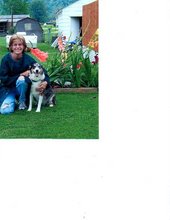
A Beautiful Summer Day.
Madam Kallee, CTD, CGC - 1994-2005 - Certified Therapy Dog and a Canine Good Citizen
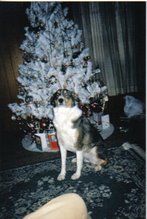
I am so pretty!
Kallee, T.D.I., CGC - Certified Therapy Dog and a Canine Good Citizen - 1994-2005

I loved to pose for the camera.
Hat Girl.

The things I do for my mom!
Happiness.

Bubby knows how to scratch a tummy.
Best of Friends.

Mine! No, Mine!, No Mine!!!
Whew !

Bubby wears me out!
This is the Life.

Just relaxing with bubby.
Kallee and Mr. Monkey
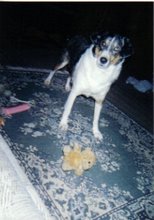
See Mr. Monkey? Wanna play?
Miss Cool.
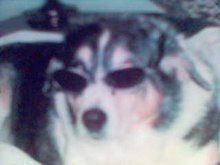
I loved to wear my shades.
Subscribe to:
Post Comments (Atom)
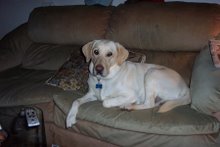

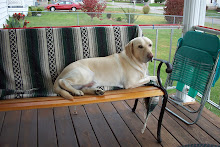
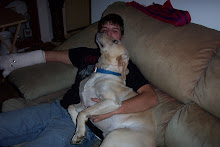
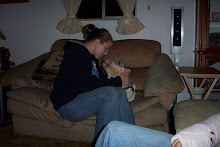
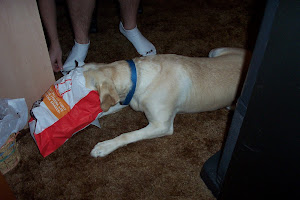
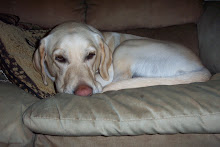

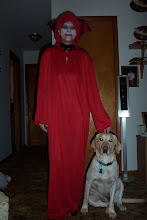
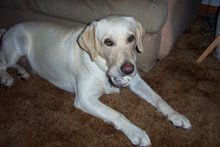
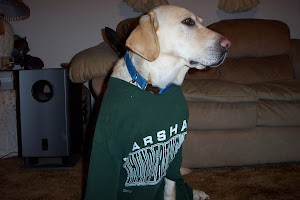


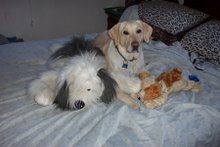

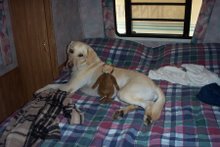
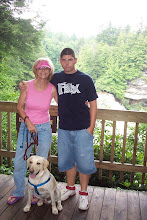
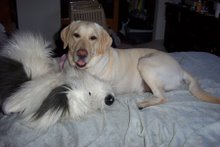
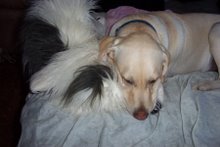
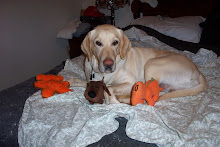
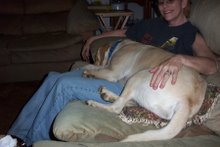
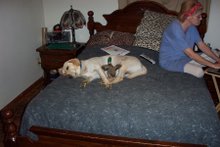
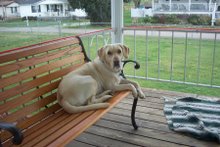
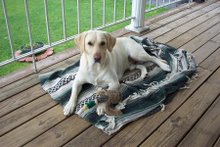
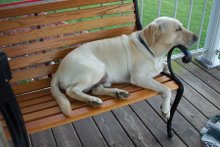

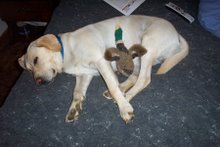
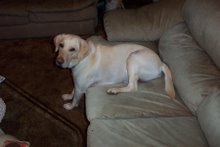
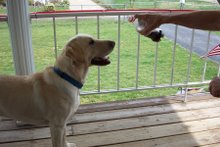
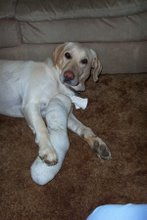
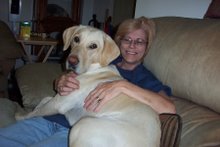
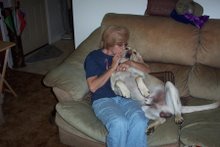
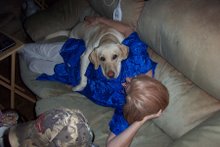
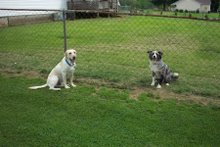
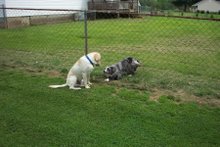
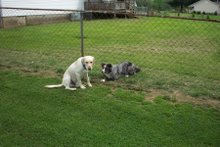
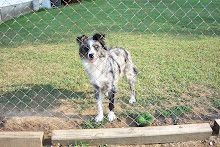
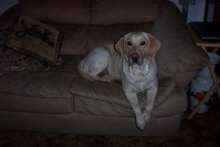
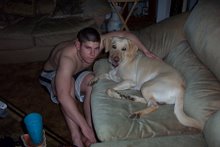
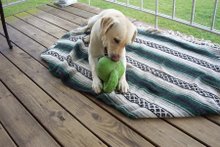
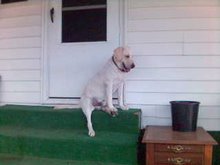
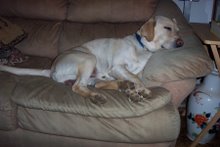
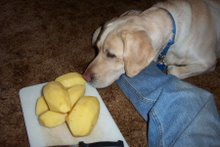


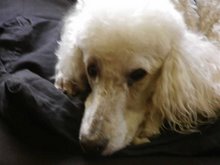

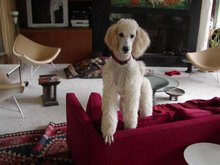
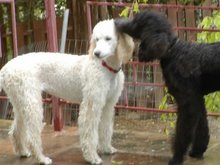
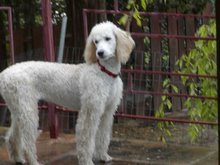

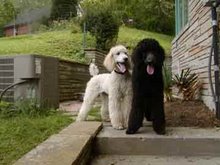
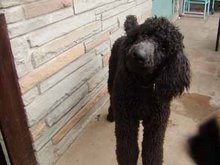
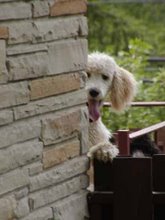
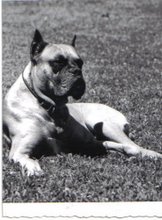

No comments:
Post a Comment